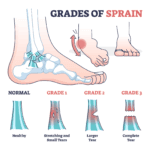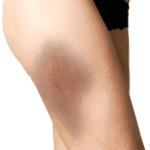Remedies and new options for tennis elbow
Do you have pain on the outside of your elbow that won’t seem to go away? If so, you could have tennis elbow — even if you’ve never swung a racket. And, if it’s been bothering you for more than a month or so, it’s a good idea to get it checked.
Most people with tennis elbow don’t require surgery. But if you do, you might be a candidate for a surprisingly quick outpatient procedure that can dramatically reduce your recovery time.
Who gets tennis elbow?
Known medically as lateral epicondylitis, tennis elbow can affect construction workers, manual laborers, meat cutters and even supermarket cashiers, usually between ages of 40 and 60. As many as 10 million Americans may suffer from this condition.
Many repetitive tasks using the hand, wrist and arm can cause the pain and inflammation of tennis elbow. Movements like gripping and twisting overwork the tendon that attaches your forearm muscles to the bony protrusion on the outside of your elbow.
When should you have it checked?
Patients typically show up at the doctor after two or three months of elbow pain. But sooner is better. see multiple patients daily for this painful condition.
The body sometimes tries to heal the damage in a way that becomes uncontrolled and erratic.that parts of the tissue start to take on a hard, knotted consistency, known as tendinosis.
Tendinosis is like having a ball of mucous stuck in your tendon, adding that tendinosis doesn’t seem to go away on its own over time.
What are first steps to treat tennis elbow?
If it’s your first time with tennis elbow, your doctor likely will recommend these conservative treatments:
- Rest the elbow.
- Use a tennis elbow strap.
- Use anti-inflammatory drugs (pills or topical ointment).
- Do physical therapy to stretch and strengthen the forearm.
If conservative treatments don’t help, there are still options to stimulate a normal healing process. Your doctor likely will order musculoskeletal ultrasound imaging to see precisely where the problem is.
\If someone comes to me saying, ‘This has been going on for six months,’ or, ‘Over the last three years, I’ve had this four times,’ we’re a little more keen to get an ultrasound earlier. Something is wrong with the tendon that keeps making the pain come back.
The imaging allows your doctor to examine the exact characteristics of the tendon, and what areas are degenerative. Corticosteroid injections or platelet rich plasma injections may be used to help control inflammation. However, the use of these injections can be unreliable.
If there’s still no improvement after a conservative approach and injection therapies, you may need surgery.
In a typical operation, the surgeon exposes the tendon, removes the damaged area and makes repairs. Three to six months of recovery are usually required before you can resume normal activities.
How does less invasive surgery work?
A minimally invasive option is available for some patients. It uses an FDA-approved technology in a procedure called minimally invasive tenotomy.
A needle device uses a stream of normal saline to create a gentle suction. It then removes the damaged, thickened mucous-like tendinosis. It leaves the soft, pliable normal tendon unaffected.
Here’s what to expect:
- Your doctor injects a local anesthetic to numb the skin and damaged tendon.
- They make a small puncture through the skin — about the size of the pointer arrow on your computer screen.
- Only one or two minutes of the 20-minute procedure involves the vibrating probe.
- With the local anesthetic, you’ll feel a slight pressure during the procedure.
The small skin puncture doesn’t require stitches, and you can return to normal activities in four to six weeks. Full recovery takes around three months.
He stresses that treatment and surgery decisions depend on your history of pain, how serious the tendon damage is and whether your occupation requires excessive use of the wrist and forearm.
Sometimes the damage is so severe that open surgery is the only option.





